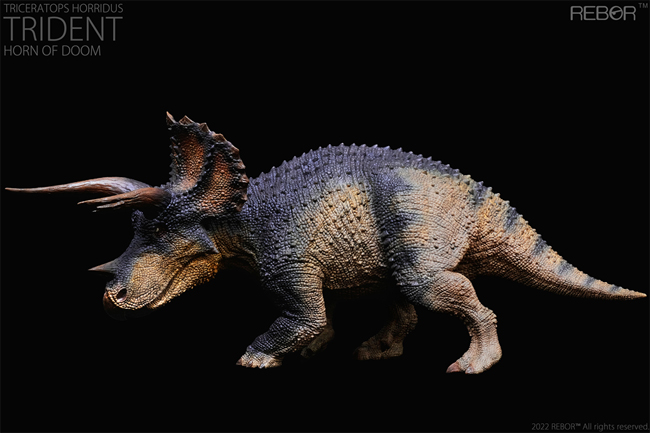Scientists Find Evidence of the “Last of the Dinosaurs”
It may be relatively small when one considers the huge fossil remains of certain dinosaurs, but the fossilised piece of a ceratopsian’s horn could help scientists understand more about the mass extinction event that occurred at the end of the Cretaceous.
Fossil Remains
Although, it is very difficult to determine the actual species that the horn belonged to, the fossil was found in the Hell Creek Formation of south-eastern Montana, an area known as the badlands and these Late Cretaceous aged rocks (Masstrichtian faunal stage) have yielded a number of Triceratops fossils – so the horn could well represent a brow horn from “three horned face”.
As the fossil was found just 13 centimetres below the Cretaceous-Tertiary boundary, otherwise known as the K-T boundary which marks the end of the age of dinosaurs, some scientists are suggesting that this is evidence that the Dinosauria were wiped out by an extraterrestrial impact. If fossils are being found close to the impact layer, then it can be summised that large herbivores such as Triceratops were still around at the very end of the Cretaceous, indicating a strong ecosystem. This constrasts with other theories put forward by palaeontologists that suggest that mega fauna such as the dinosaurs were already under threat of extinction before the meteor/asteroid impact.
Based on this fossil evidence, it can be proposed that dinosaurs were around right up to the time all traces of their existence vanished, to put it another way, they disappeared suddenly, as the result of an abrupt global disaster rather than a slow, drawn out extinction.
A Model of a Triceratops
The Triceratops model (above) is from the Rebor range of models and figures. To view this range: Rebor Models and Prehistoric Animal Figures.
Although it is now accepted that a cosmic impact took place at that time, most likely in the Yucatan peninsula resulting in the Chicxulub crater; very few dinosaur fossils have been found in the rock layers immediately below the K-T boundary. Indeed, surveys undertaken by American scientists studying the Hell Creek Formation have shown a remarkable decline in the diversity of dinosaur genera leading up to the end of the Cretaceous. The paucity of fossils from layers of rock just below the K-T boundary and the lack of many different genera, has been put forward as evidence to indicate that the dinosaurs were already under severe extinction pressure before the global catastrophe of the impact from outer space.
The K-T Boundary
In some parts of the western United States, the gap between dinosaur fossils and the beginning of the Cenozoic is as much as three metres, marking a huge amount of geological time. This zone barren of dinosaur fossils has led experts to claim that this was evidence that dinosaurs might have died well before any impact.
Now, researchers have found a fossil in this zone – a dinosaur horn no more than five inches below the impact layer, making it the specimen closest to the end of the Age of Dinosaurs found yet.
Tyler Lyson, a young vertebrate palaeontologist from Yale University, who has already made an “impact” on the science of palaeontology with the remarkable discovery of a beautifully preserved duck-billed dinosaur fossil in South Dakota stated:
“Just because we have one dinosaur in the gap doesn’t necessarily falsify the idea that dinosaurs were gradually declining in numbers. However, this find indicates that at least some dinosaurs were doing fine right up to the K-T boundary.”
He went on to add:
“We need to do more field work to find more dinosaurs within the three metre gap, I am confident that with more field work, we will find more dinosaurs within this interval.”
The new findings were published in the journal Biology Letters.







Leave A Comment